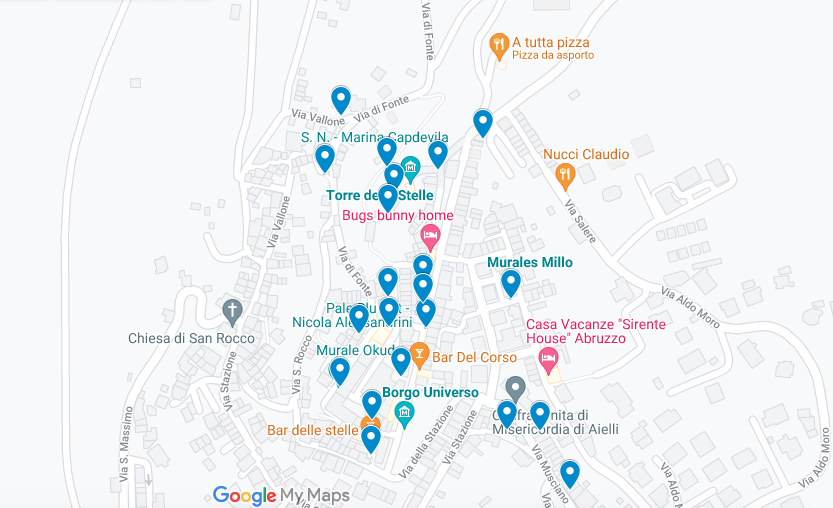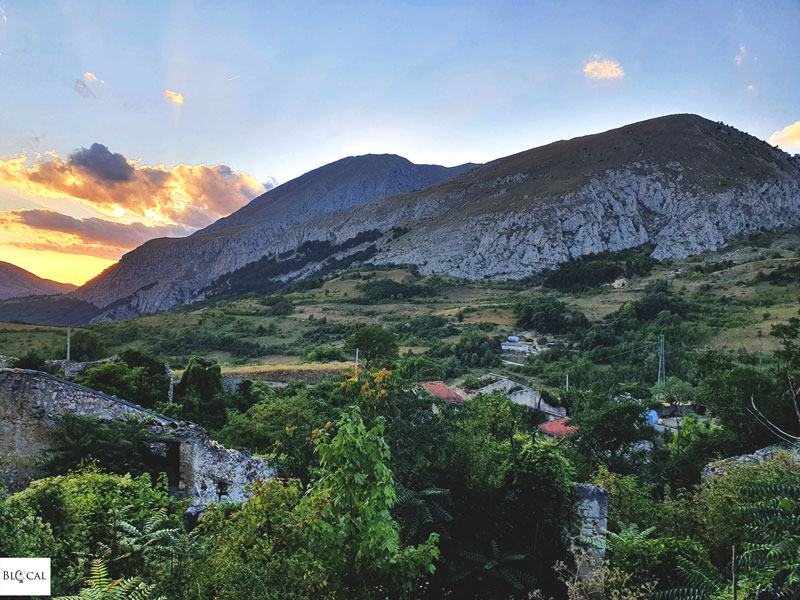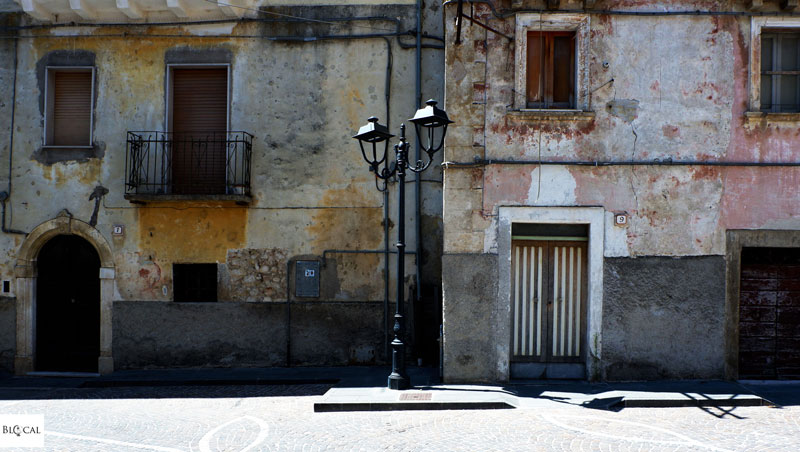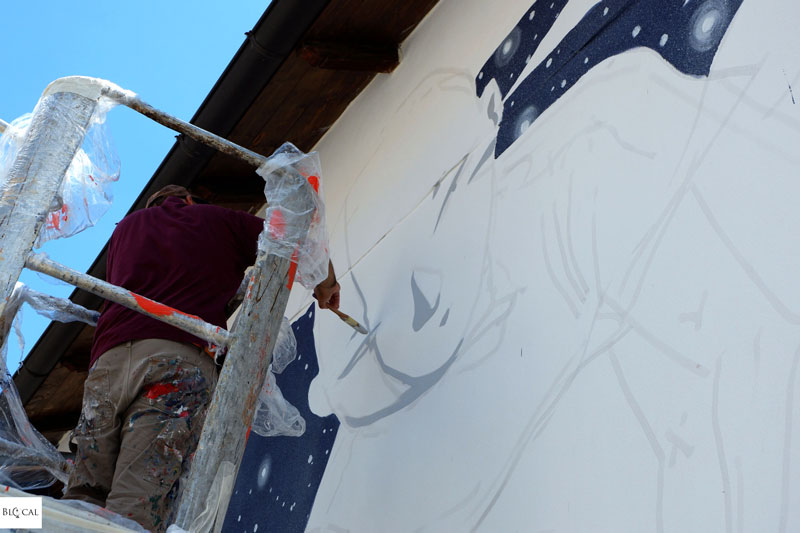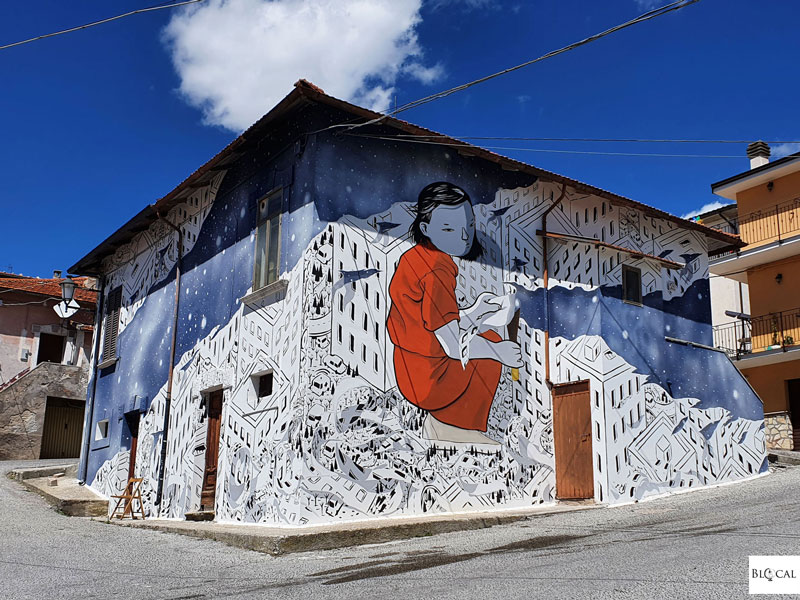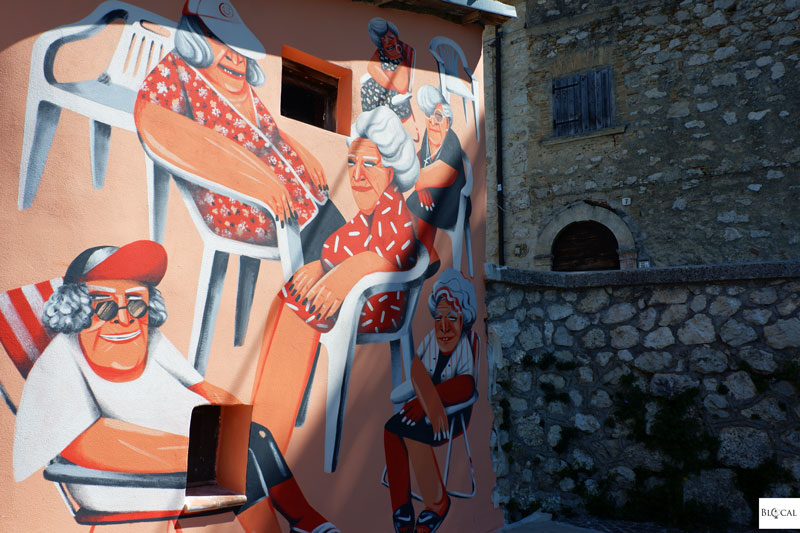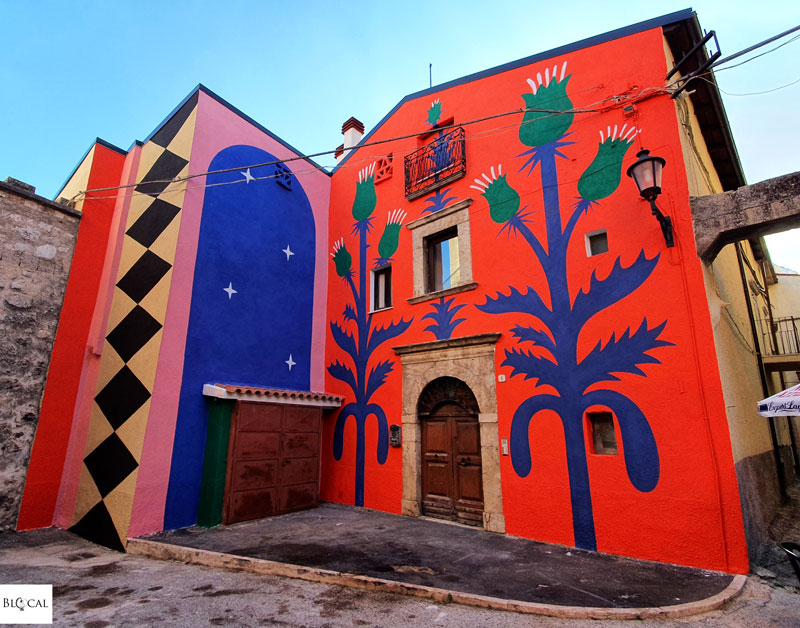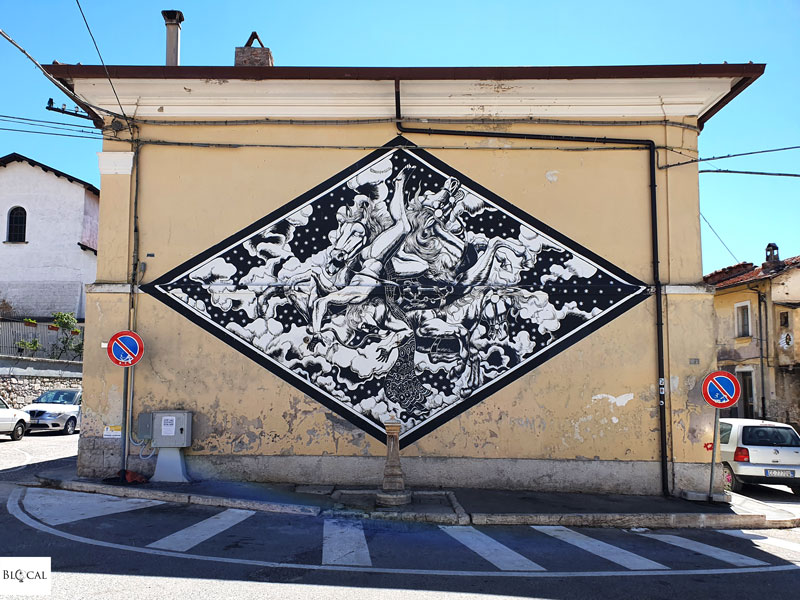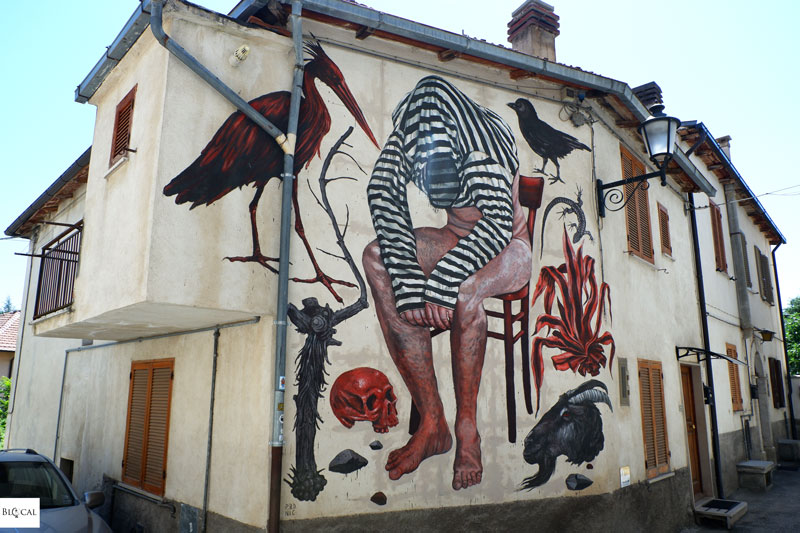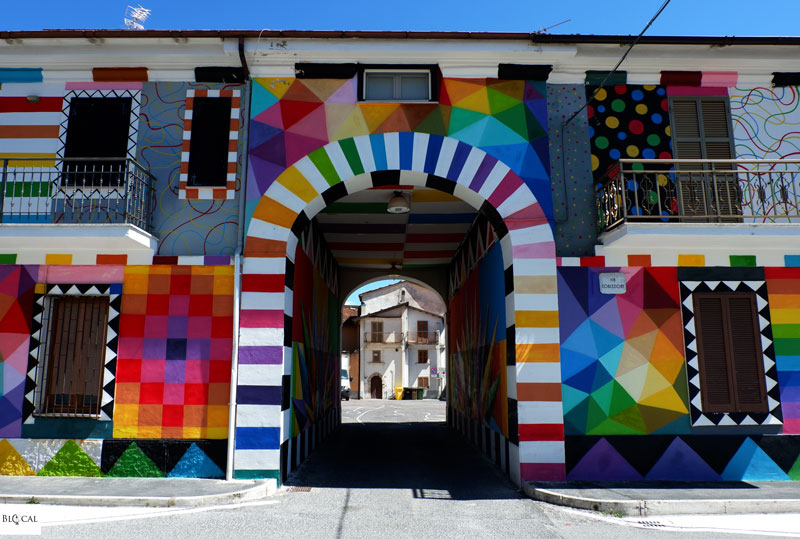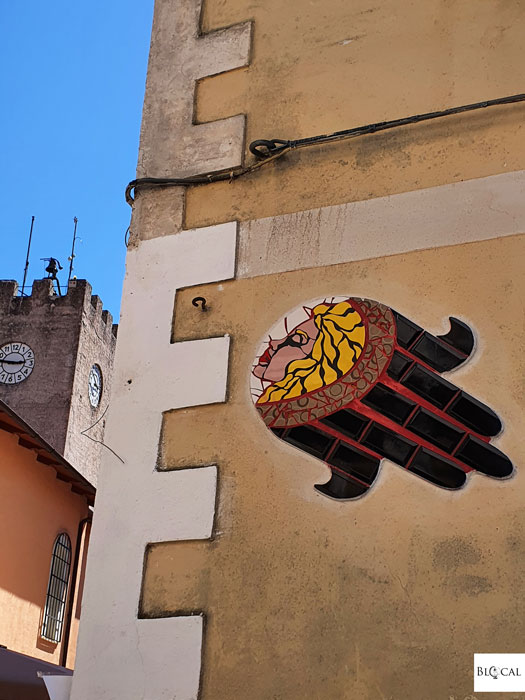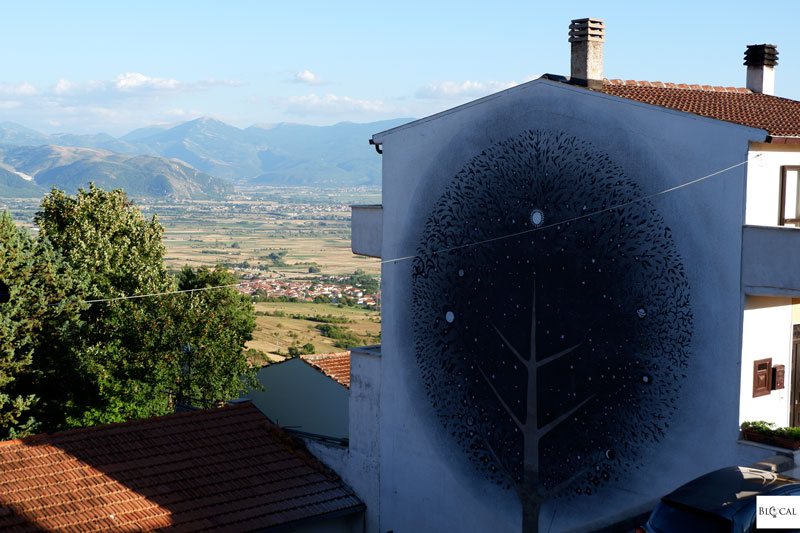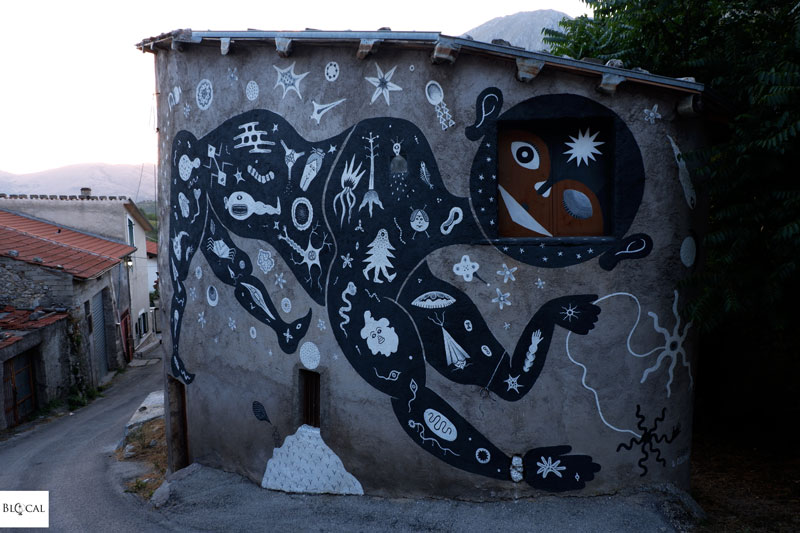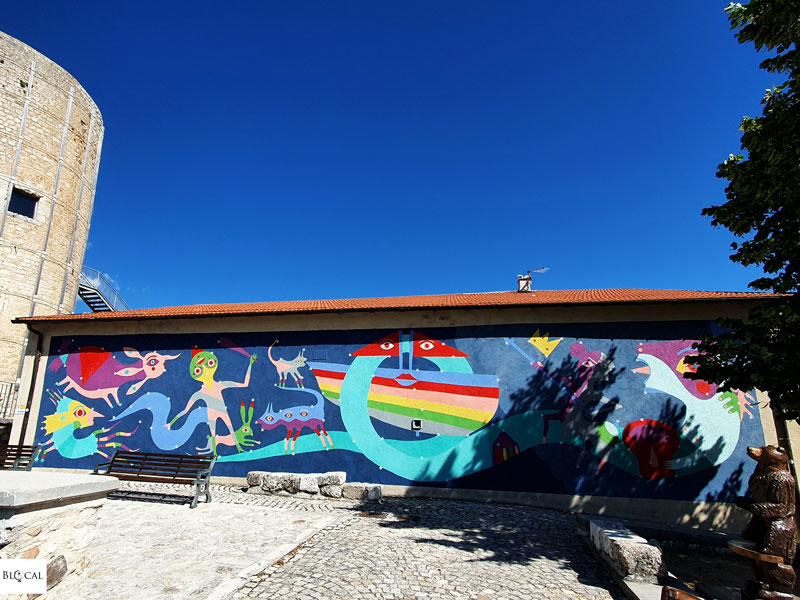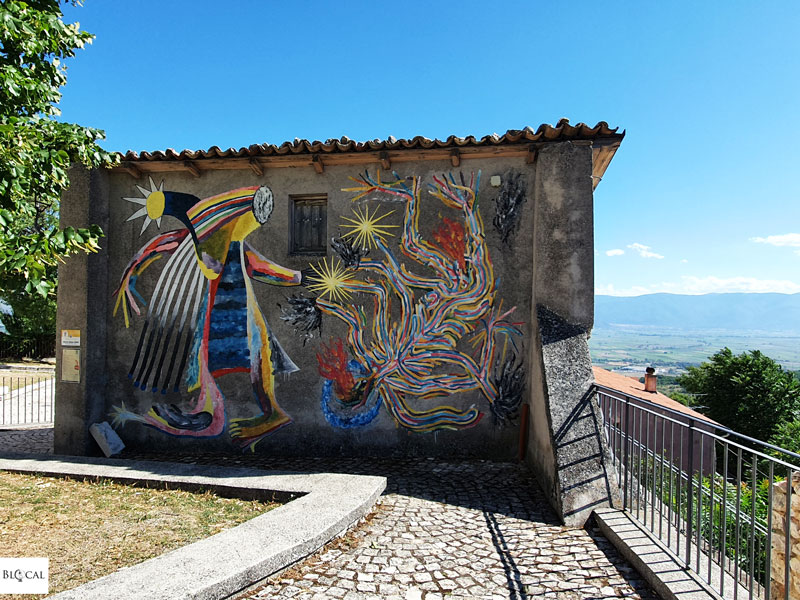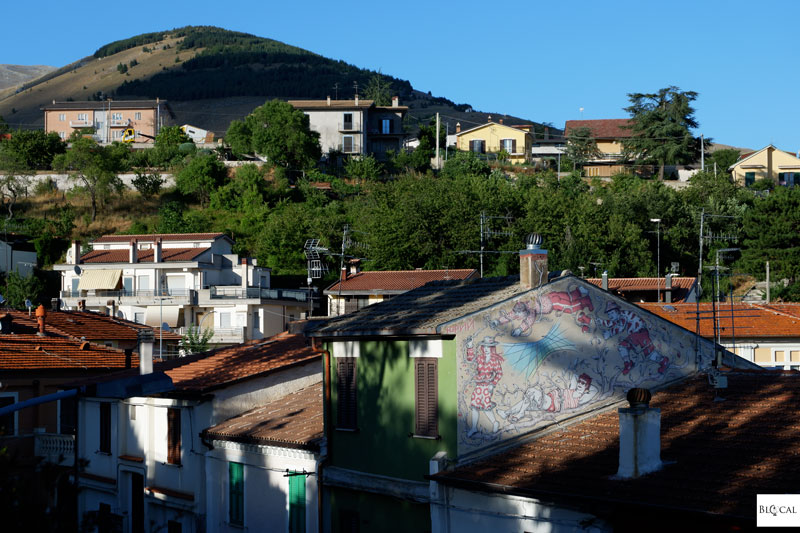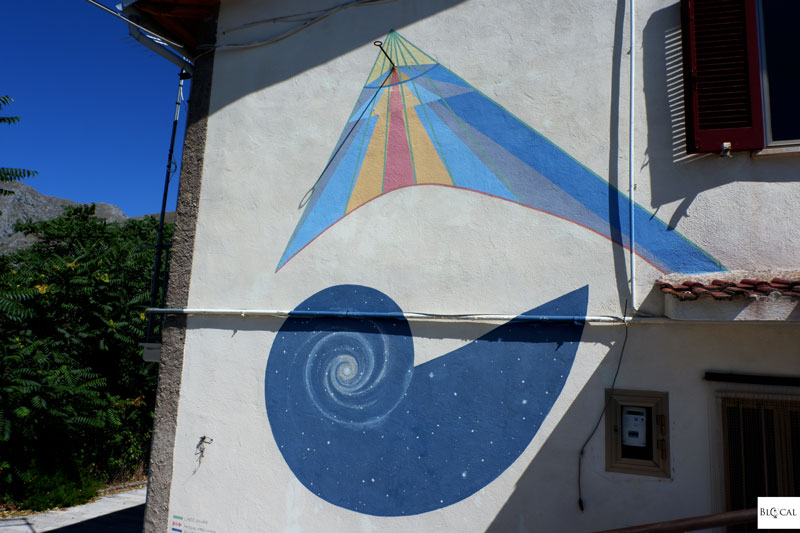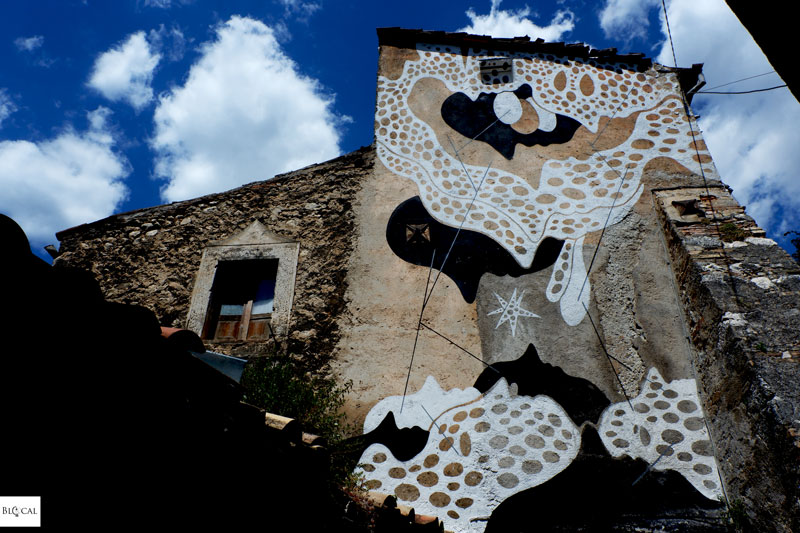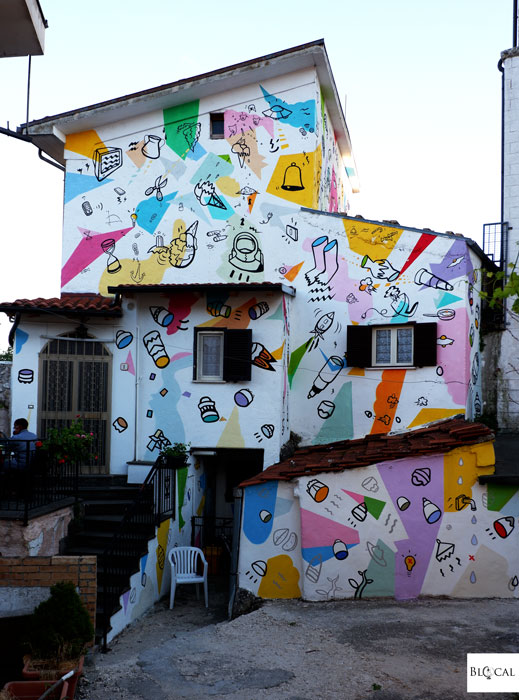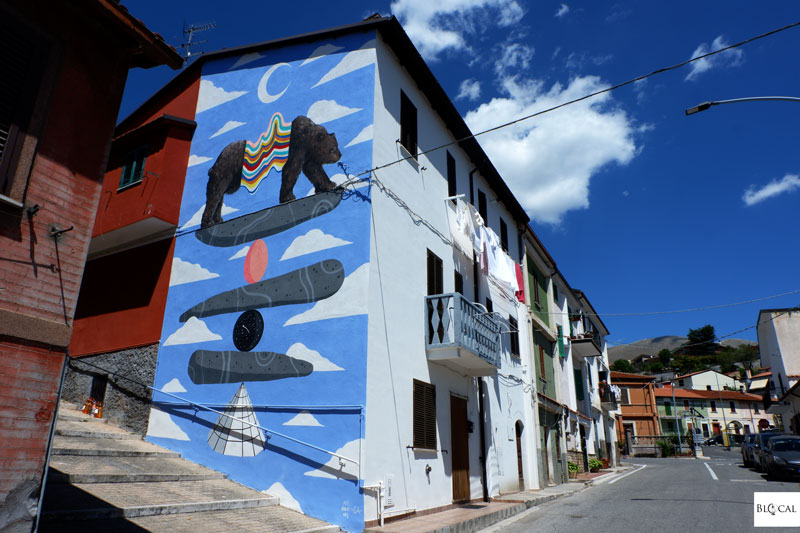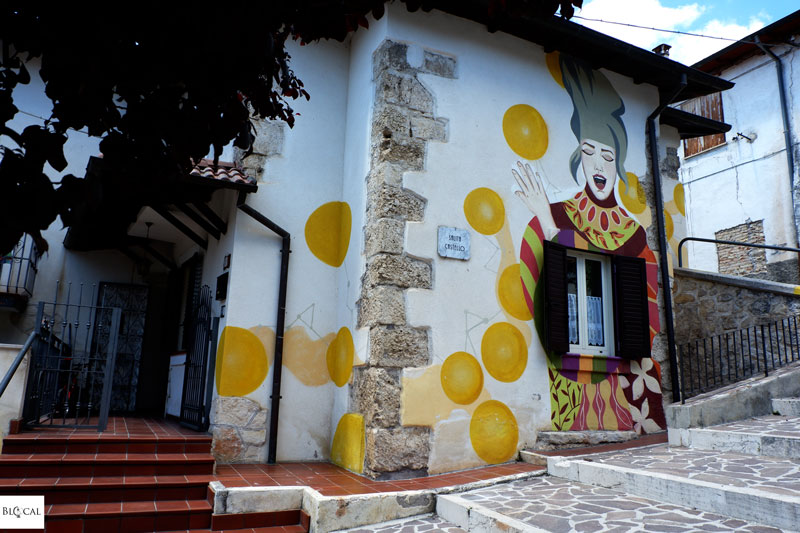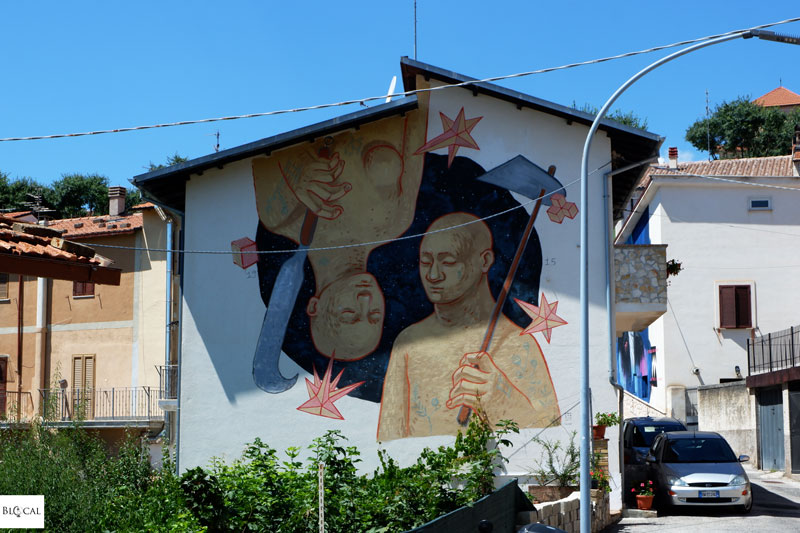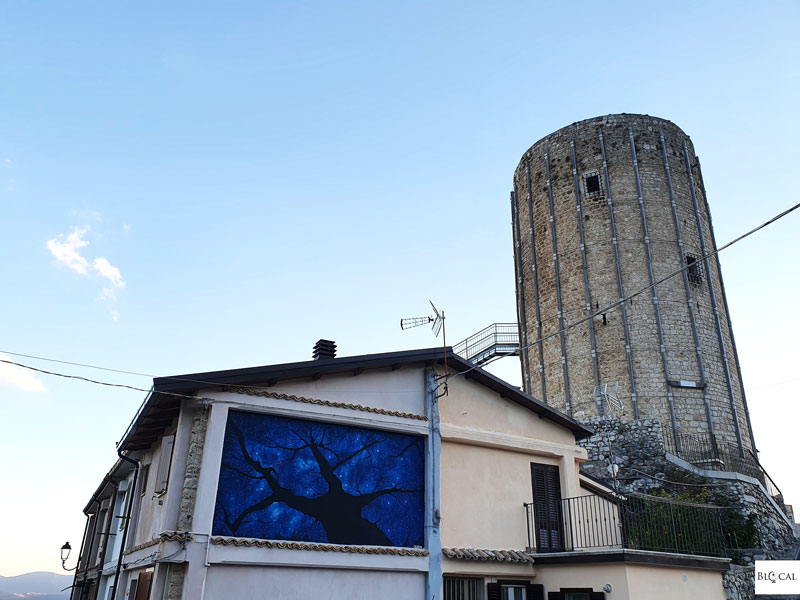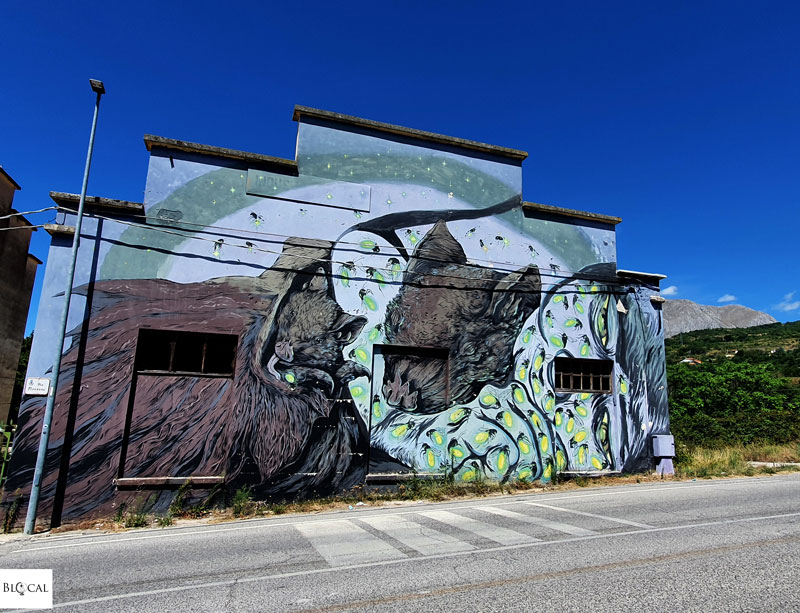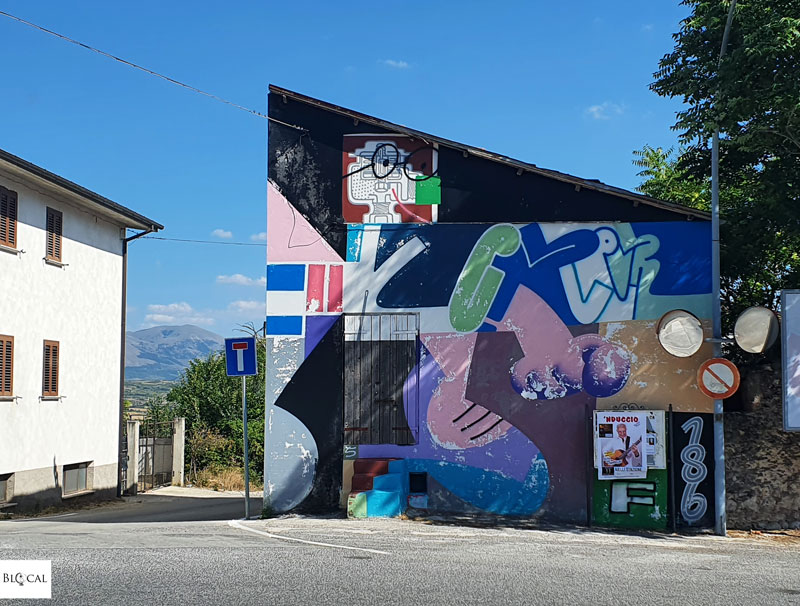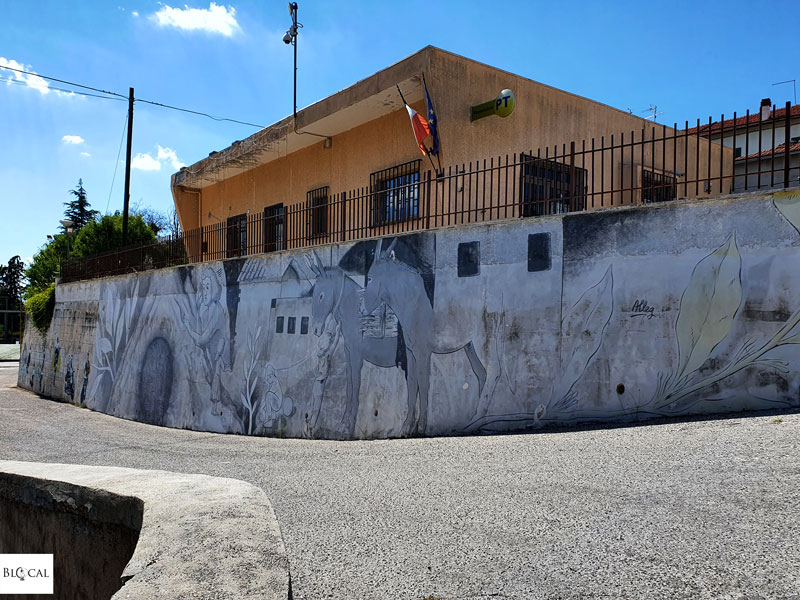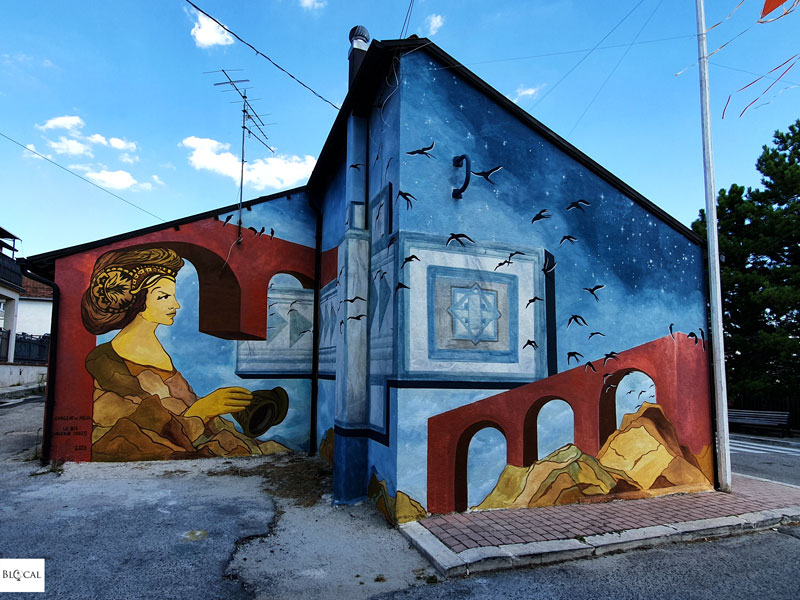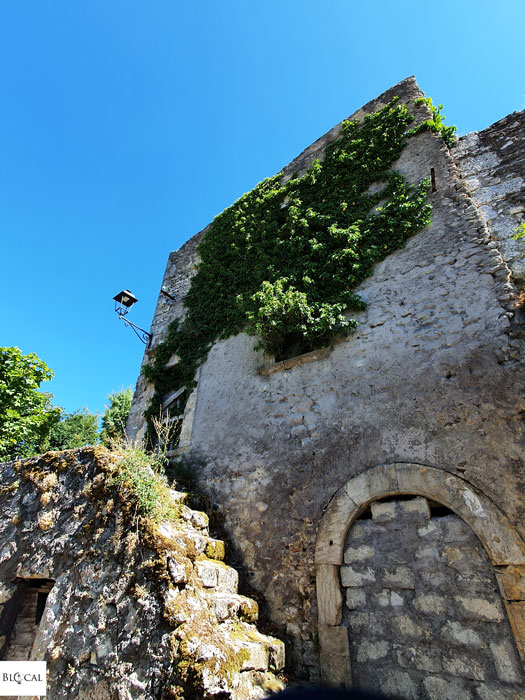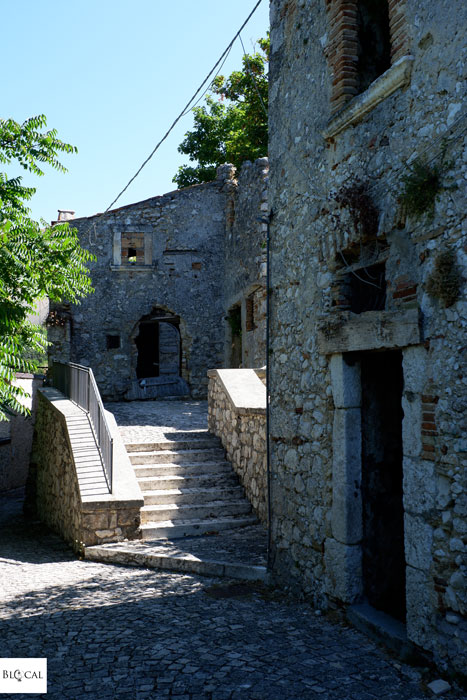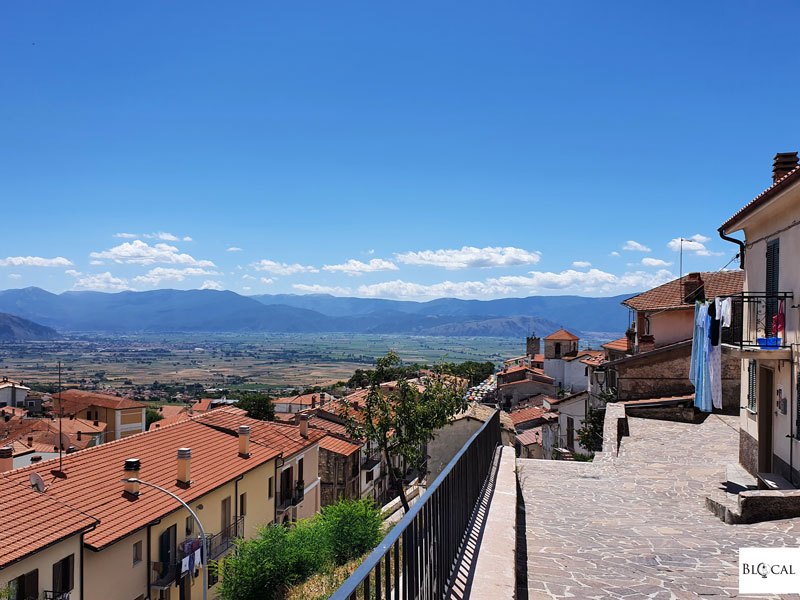It has been a very hot summer in Rome, but luckily at the beginning of August I got the chance to escape the heat and take shelter in the mountains of the Natural Regional Park Velino-Silente. Nestled among its highest peak lies Aielli, a medieval village housing an international festival of street art and astronomy called Borgo Universo.
At its 5th edition this year, the Borgo Universo festival challenged national and international street artists to create artwork that drew inspiration from astronomy, as Aielli is also known for a medieval tower (Tower of the Stars) now turned into an astronomical observatory – the highest in Central Italy. Imagine how beautiful the night sky was from up there!
Borgo Universo, Street Art in the Medieval Village of Aielli
The main reason why I went to Aielli was to catch up with Millo, who was working at his wall that weekend.
Millo already painted a stunning mural in Aielli last year, and this summer he was back to add a second character, thus completing this celestial design that develops along all four facades of a small house in the old part of Aielli. Millo’s artwork literally unveils the magic of the universe under the superficiality of our daily lives.
- Read also – “One week with Millo in Pescara“
Another artist at work that weekend was Marina Capdevila, who chose to represent the personal universe of Aielli’s elderly population, who happen to be her favorite subjects.
The Spanish artist is well-known for painting the beauty beyond the typical picture of aesthetic values, especially when it comes to the elderly in modern society. She does so through her nearly caricatural style and lots of irony to bring vitality into her scenes.
Still part of the 5th edition of Borgo Universo street art festival is the artwork by Agostino Iacurci, who unfortunately had already left the village by the time I arrived. Iacurci’s vivid colors and essential shapes are at the core of “Cardi (1571-2021)” (cardi means “thistles” in Italian), an immersive mural in the old town of Aielli.
My favorite mural in Aielli dates back to 2017. It’s an artwork by Zamoc, who painted The Fall of Phaeton, a cosmological myth painted by many other major artists across art history, amongst whom Michelangelo and Rubens. Zamoc’s epic mural is also referencing the dramatic earthquake of 1915, thus establishing a stronger connection with the place.
Another great work in Aielli is the abstract composition by 2501, who immortalized on a wall the rays of sunlight as they were reflected by mirrors. 2501’s visually stunning works of line art are amplified by the use of monochromatic color schemes and repetition. In addition to this main, hypnotizing mural, he painted several smaller pieces scattered around the little square – so subtle and intimate that it will take you some time to spot them all.
This introspective mural by Nicola Alessandrini invites us to humbly acknowledge that we are just a tiny speck in the universe; or better yet, we are part of it. We are tiny pieces of a much bigger organism. The title of the artwork – Pale Blue Dot – quotes the well-known astronomical picture of the Earth, seen from Space.
Undoubtedly, the most photographed artwork in Aielli is “Illuminary Place.” This multicoloured, geometric piece by Okuda San Miguel gives a new perspective to an arch at the entrance of the old village. It’s like a portal to a different world, or maybe even the infinite universe.
The Italian ceramist Orodè Deoro created three installations on the walls of Aielli. Half hand and half face, these poetic creations are projected toward the sky like shooting stars.
Perfect metaphor of Aielli’s inhabitants, the iconic little men of Sam3 are looking at the starry sky while still staying rooted in their local traditions. Like in any other poetic artwork by the Spanish artist, his tiny silhouettes are in the state of metamorphosis – enigmatically in between mankind and plant life and, in this case, also part of a bigger tree that is the universe.
“Signs of life” is the artwork painted by the Guerrilla Spam collective in 2017 for the Borgo Universo festival. The concept of this mural is exemplified by the little character in the corner who says, “Inside me, there are microorganisms living my same life. They don’t know that they are part of my body. Of which body am I part?”
Gio Pistone drew inspiration from the etymology of the word desiderio (wish), which comes from latin de-sidero, meaning “without stars.” Our ancestors relied upon the observation of the stars so heavily that when the sky was cloudy they were longing for the stars to be visible again. Through her colorful style, Gio Pistone represented the constellations that aren’t visible to us, those upon the Australian emisphere.
On this same panoramic terrace, a smaller piece by EmaJons and Sbrama represents their artistic synergy as an encounter between two souls giving birth to a third artist.
Inspired by the use of colors in the posters of last century’s propaganda, Hopnn’s visual world – which he sees as a cultural propaganda – is strictly red and white. Representing the four seasons, the characters he painted for Borgo Universo fly around the solar clock designed by Paolo Maria Ruscitti.
Another solar clock in Aielli is the one made by Dem, boasting a representation of our galaxy within a shell. It’s not exactly my cup of tea, but you know how much I love my street art guides to be thorough ;)
Aris conceived his piece starting from the festival’s name: something small, like a hamlet, (Borgo, in Italian) that contains the greater (the Universe). The black faces represent individuals that, like in a Matrioska, contain within – and are contained by – the infinite, which is represented by the white shapes.
The wall itself has a peculiar shape that is projected upwards, stressing the author’s idea of a dialogue between the small village and the sky.
In addition to the ATM giving out golden stars, Matlakas also painted a larger mural for the Borgo Universo festival, capturing through his upbeat, colorful style the conversations and the encounters he had around the village.
Holaf and C.A. Giardina painted the Marsican brown bear, an endangered animal living in the natural park surrounding Aielli. Its destiny is represented as a precarious equilibrium suspended between the sky and the earth.
David De la Cruz’s geometric piece is a journey to the end of the universe passing through wormholes and tunnels. A well-known photographer, David De la Cruz approached street art in 2012, when he began exhibiting his photos in the streets under the slogan “No street photography, photography in the street”. Eventually, he began painting geometric shapes to represent the relationship between men and their environment through these neat compositions on walls worldwide.
Emanuela Esposito and Valeria Iozzi represented the feminine universe with three women playfully exchanging their energy.
The mural by Giovanni Anastasia is inspired by the story of Aielli: the village was divided in two by an earthquake in 1915, and the artist represents this dualism through the astronomical sign of Gemini, in a composition that -to my eyes- graphically recalls the interrelation of yin and yang in Chinese cosmology.
Finally, Alberto Cicerone painted a simple tribute to Aielli’s beautiful starry nights. And after a visit to the astronomical observatory “Torre delle Stelle,” I really can only echo his wonderment.
Borgo Universo, Street Art Around Aielli Station
After the earthquake that destroyed the village in 1915, many families started a new life downstream. This is where you’ll find the Aielli train station nestled among many modern buildings and a few more murals.
My favorite mural downstream is the one by Ericailcane, who represented nature and life under the starry sky. I especially loved the detail of the fireflies ;)
Sawe’s graffiti production has been influenced by his illustration studies first, and by his work in animation after that. His colorful, cartoonish style brings to life an imaginary planet called Kepler 186f.
With a piece that recalls the illustrations in a fairy tale book, Alleg painted a mural to tell the story of the reconstruction of Aielli after the dramatic earthquake.
Still inspired by Aielli, Valeria Iozzi highlights the mountain that serves as a stunning backdrop to the village, the Church of San Giuseppe and Aielli’s inhabitants who, like swallows, go away only to come back later.
In the last few decades, the village has suffered from depopulation. In fact, the main goal of the Borgo Universo festival is to fight this issue through art.
This quaint village is certainly full of visitors throughout the summer though, as it makes a colorful addition to a relaxing holiday in the mountains. As for me, I bought a lottery ticket to support the festival, so now I’m hoping to be asked to go back to Aielli after the draw… fingers crossed!
Enjoy my video: Borgo Universo street art festival
Trust me, it’s way easier if you use my Aielli street art map!
